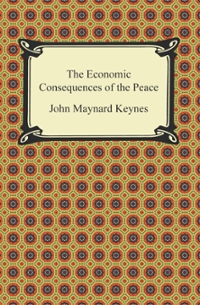Question
CASE STUDY DID THE ECONOMIC EXPERIMENT IN THE UNITED STATES DURING THE PAST FOUR YEARS SHOW US A FEW THINGS? But then the US economic
CASE STUDY
DID THE ECONOMIC EXPERIMENT IN THE UNITED STATES DURING THE PAST FOUR YEARS SHOW US A FEW THINGS?"
But then the US economic policy of the past four years came along. It brought tax cuts and higher growth. The unemployment rate fell. Wages, particularly for low-income workers, increased. But contrary to Phillips curve thinking, inflation remained the same or even declined. Even as unemployment fell below 4 percent prior to the COVID-19 pandemic, the inflation rate continued to hold or even decline.
Did the economic experiment in the United States during the past four years show us a few things? Perhaps under the right conditions, long-held assumptions just aren't valid?
What are some of those pre-pandemic conditions? Did gains from information technology that we have been expecting for several decades finally kick in, producing larger-than-expected productivity gains to fuel both higher wages and higher profits? How important was the loosening of regulations on business? How much did Federal Reserve policiespumping enough money into the economy to maintain low interest rates, supporting business growth and lower borrowing costshelp? Should we be surprised that economic growth, at least in terms of how we measure it, increased without attendant inflation?
DID THE ECONOMIC EXPERIMENT IN THE UNITED STATES DURING THE PAST FOUR YEARS SHOW US A FEW THINGS?"
But then the US economic policy of the past four years came along. It brought tax cuts and higher growth. The unemployment rate fell. Wages, particularly for low-income workers, increased. But contrary to Phillips curve thinking, inflation remained the same or even declined. Even as unemployment fell below 4 percent prior to the COVID-19 pandemic, the inflation rate continued to hold or even decline.
Did the economic experiment in the United States during the past four years show us a few things? Perhaps under the right conditions, long-held assumptions just aren't valid?
What are some of those pre-pandemic conditions? Did gains from information technology that we have been expecting for several decades finally kick in, producing larger-than-expected productivity gains to fuel both higher wages and higher profits? How important was the loosening of regulations on business? How much did Federal Reserve policiespumping enough money into the economy to maintain low interest rates, supporting business growth and lower borrowing costshelp? Should we be surprised that economic growth, at least in terms of how we measure it, increased without attendant inflation?
DID THE ECONOMIC EXPERIMENT IN THE UNITED STATES DURING THE PAST FOUR YEARS SHOW US A FEW THINGS?"
But then the US economic policy of the past four years came along. It brought tax cuts and higher growth. The unemployment rate fell. Wages, particularly for low-income workers, increased. But contrary to Phillips curve thinking, inflation remained the same or even declined. Even as unemployment fell below 4 percent prior to the COVID-19 pandemic, the inflation rate continued to hold or even decline.
Did the economic experiment in the United States during the past four years show us a few things? Perhaps under the right conditions, long-held assumptions just aren't valid?
What are some of those pre-pandemic conditions? Did gains from information technology that we have been expecting for several decades finally kick in, producing larger-than-expected productivity gains to fuel both higher wages and higher profits? How important was the loosening of regulations on business? How much did Federal Reserve policiespumping enough money into the economy to maintain low interest rates, supporting business growth and lower borrowing costshelp? Should we be surprised that economic growth, at least in terms of how we measure it, increased without attendant inflat
EXPLAIN YOUR ANSWERS
Question 2.
1. Which of the subsequent groupings of products reflects a reduction in the sustainability of an budget?
2. When making economic decisions the government is least likely to take account of
3. Monetary resources are individuals which
4. Employment is a factor of construction for the reason that
5. In pecuniary philosophy it is rumored that personnel try to find to
6. Which of the following is a strength_________ of a market economy?
7. Which of the following is a role of government in a pure free-market economy_________?
8. An individual will make economic decisions at the margin regarding which course of action should be taken. The table below shows two outcomes associated with each of four courses of action that an individual could take. Which of the four courses of action would a rational consumer choose?
9. The table below shows how the total utility for a particular consumer changes as consumption of a particular good increases. Quantity Consumed Total Utility 0 0 1 20 2 38 3 52 4 60 5 64 At which level of consumption is the consumer's marginal utility equal to 4?
10. If a car firm increases production by one car and the additional revenue from the sale of this additional car is greater than the increase in the cost of producing this additional car, then
Step by Step Solution
There are 3 Steps involved in it
Step: 1

Get Instant Access to Expert-Tailored Solutions
See step-by-step solutions with expert insights and AI powered tools for academic success
Step: 2

Step: 3

Ace Your Homework with AI
Get the answers you need in no time with our AI-driven, step-by-step assistance
Get Started


